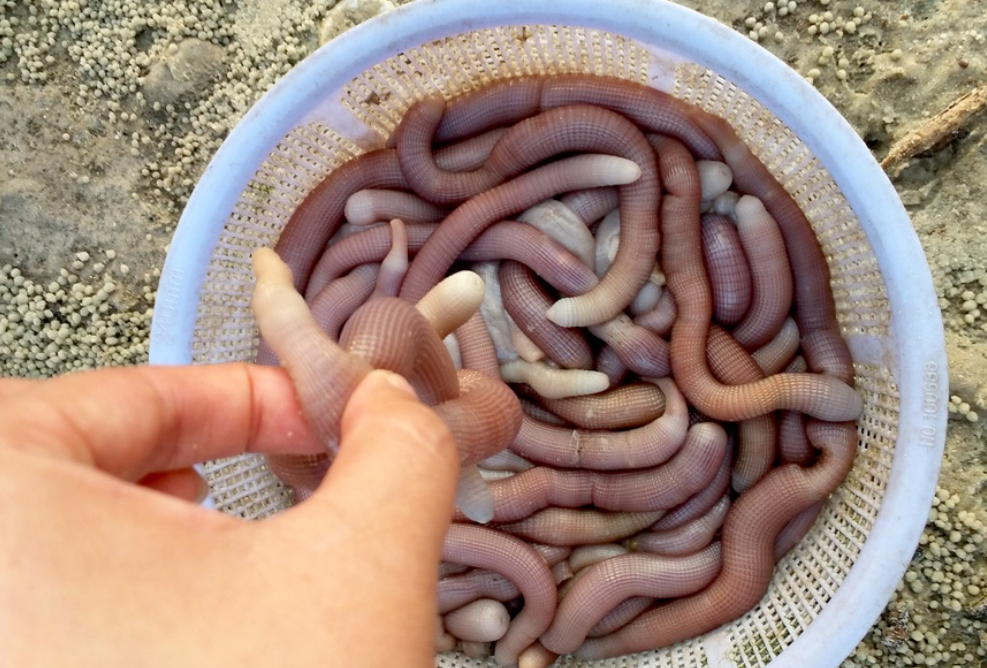
Quang Ninh, with Ha Long Bay and Co To Island, is known as one of the most famous tourism sites in the north, but it also attracts travelers thanks to its rich culinary system and original specialties. One is sa sung which is an expensive seafood with high nutritional value.
The appearance of peanut worms is reddish brown. At first glance, they look very similar to earthworms, but are larger in size and have many tiny veins on its body. Its intestines are full of sand.
Sa sung often hides itself under sand crevices and rock caves in coastal areas, sometimes on the seabed up to 30 meters deep. Local fishermen have to catch them in the early morning, when the tide has receded.
Sa sung can only be collected when the sea water level is low, from March to July.
“Fishermen have to leave home very early in the morning. And only experienced fishermen with specialized tools can catch sa sung,” said Doan Trang, a farmer in Van Don district.
There are two kinds of sa sung products, fresh and dry. While fresh sa sung are soft, chewy and crunchy and are used to prepare delicious dishes such as fried sa sung and kohlrabi, soup and porridge, dried sa sung are attractive because they are crispy and can be preserved for a long time.
Dry sa sung, if grilled, will produce a very attractive aroma, and is a favorite snack for men to drink with liquor or beer. Many people believe that the sea worms are even more delicious than dried grilled cuttlefish.
“Fresh sa sung is the best, which is the choice of foodies. However, not everyone has experience in choosing sa sung,” said Thu Phuong, a woman on Co To Island.
It has a high nutritional level, containing 18 types of amino acids and 17 minerals useful for humans. Oriental medicine says the specialty is good for men, people with asthma and children with rickets.
One kilogram of fresh sa sung sells at VND300,000-400,000 per kilogram, while dried sa sung is more expensive, priced at VND4-7 million per kilogram.
On average, 10-12 kilograms of fresh sa sung can make up one kilogram of dried sa sung.
People have to clean fresh sa sung right after they are caught. After that, they dip sa sung in boiled water and dry with a charcoal stove for two hours.
Hanh Nguyen